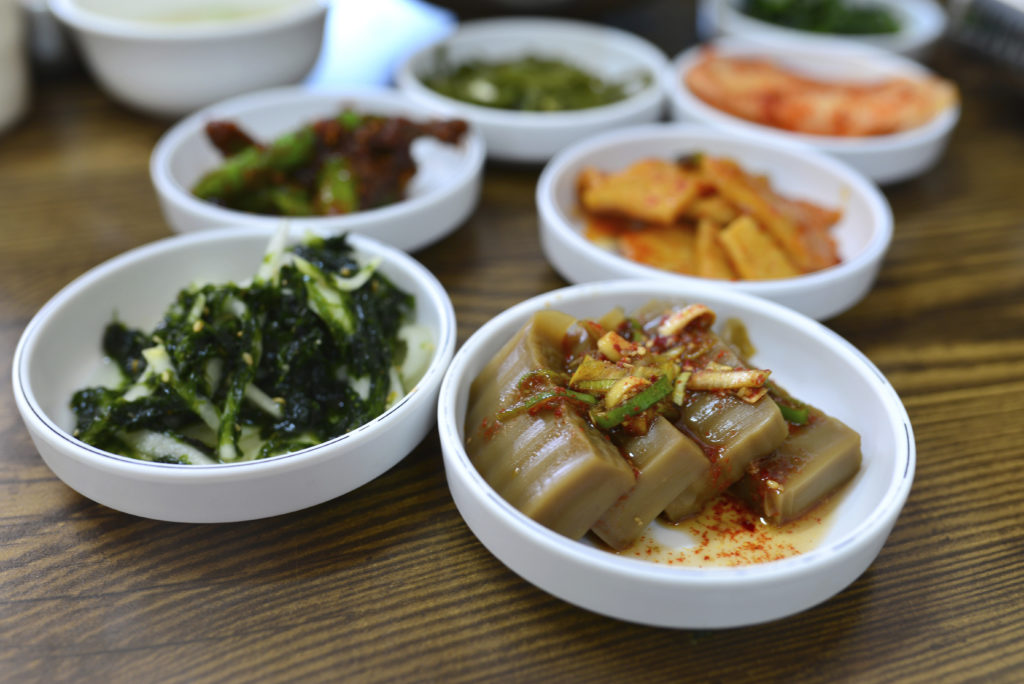Fusion cuisine is not a single style of food. Rather, the term can apply to any dish that brings together elements from two or more distinct cultural backgrounds. Many restaurants specialize in bridging these gaps, with chefs drawing on their varied training in the culinary arts.
Purists may criticize these meals for compromising traditions, but fusion cooking is nonetheless ubiquitous in the U.S. Bon Appetit wrote that mixing and matching ingredients and techniques has become the definitive American way of cooking, suiting the country’s unique mix of ethnicities. Students in culinary institutes can discover intriguing combinations of their own and build menus full of fascinating and unusual tastes.

Bringing it all together
The concept of fusion has a complicated history in American dining, dating back to the 1980s. The Smithsonian credited chef Norman Van Aken with coining the term, which he borrowed from the musical genre of jazz fusion. Van Aken explained, however, that he did not invent the style of cooking.
“Fusion cuisine exists everywhere. And has existed everywhere long before a term that I became known for choosing ever came along,” he said. “People intrinsically take with them what they have, know and love. But, then they are thrust into different circumstances (a war, a marriage) and their adaptation requires them to move forward.”
The name stuck and was applied to the experimental dishes that were already being served at numerous establishments at the time. Slate cited examples like Wolfgang Puck’s Chinois on Main in Santa Monica, which opened in 1983 and featured Asian ingredients prepared with French cooking methods. In 1987, Japanese chef Nobu Matsuhisa, who had run a sushi bar in Peru, applied Latin American influences to his eponymous Beverly Hills restaurant. In both cases, the chefs found success and expanded to locations across the country.
However, as these hybrid cuisines became popular in mainstream American dining, the term fell out of favor. Restaurants were widely criticized for bringing together too many clashing elements, rather than developing focused styles like fusion’s pioneers. In 1998, Food & Wine suggested that the concept would become entirely meaningless as Westerners grew increasingly familiar with Asian-style foods.
Exceptional fusions
The joining together of varied cultural influences remains a major part of the culinary scene, from fine dining to food trucks. However, as The Wall Street Journal noted, many restaurateurs dislike having their style called fusion, feeling it implies a lack of authenticity. These chefs insist they are simply using the combinations of flavors and techniques that fit their own preferences and backgrounds.
The Momofuku family of restaurants owned by chef David Chang has achieved great success with Asian-influenced dishes, establishing locations in New York City, Washington, D.C., Las Vegas, Toronto and Sydney. The first of these was New York’s Momofuku Noodle Bar, which opened in 2004. The restaurant serves ramen broth containing non-traditional ingredients like bacon and buns that feature unconventional fillings such as brisket with horseradish, pickled red onion and cucumber. Patrons can also reserve a large-format dinner of fried chicken – and, if they prefer, caviar – meant to serve four to eight guests.
MoPho in New Orleans lets the city’s multicultural nature shine through, combining ideas from Southeast Asia, the American South and beyond. Chef Michael Gulotta prepares the Vietnamese noodle soup pho with an array of options like pepper-braised tripe, pork shoulder, head cheese, ribeye steak, mushrooms, duck confit and ox-tail. Locally caught clams are braised with pepper jelly and served with smoked pork jowl, mint, shallots and beignets.
Begun as a San Francisco food truck, Mission Chinese Food now has locations in both its home city and New York. Chef Danny Bowien specializes in putting unusual, multicultural spins on Asian-inspired comfort food. That approach is epitomized by a burrito stuffed with Kung Pao pastrami, cod fried rice, cheese, sour cream, scallions, cilantro, peanuts and home fries. Among the entrees are General Tso’s veal rib and thrice cooked bacon and rice cakes with tofu skin, bitter melon and Sichuan pepper.
Fusion has not always been a popular term in American dining, but the culinary melding it describes is as vital as ever. Chefs continue to find exciting ways to break down cultural barriers and embrace new juxtapositions of tastes and cooking techniques.


